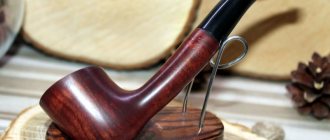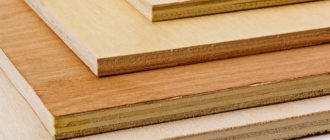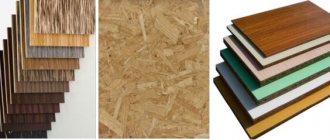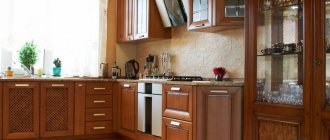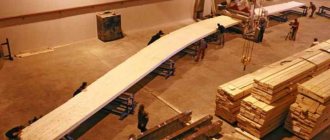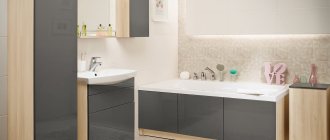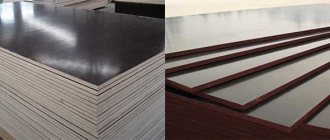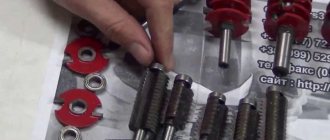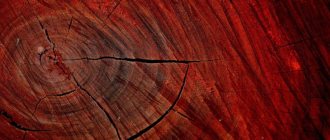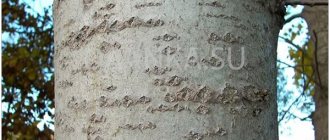Cement particle boards (abbreviation CSP) refer to a whole class of building materials used for various purposes .
They are made from wood chips, high-quality cement and various additives that give cement particle boards the necessary characteristics.
Next we will tell you:
- what is CBPB and how are they used in construction;
- how they differ from other materials containing chips and cement;
- what documents regulate the properties of cement bonded particle boards;
- what characteristics does DSP have, and what types of this material are there;
- how DSPs are used, and whether they are harmful to health;
- How to determine a quality slab.
You will also find out what advantages and disadvantages cement particle boards have compared to other types of finishing materials and what builders and owners/residents of houses and apartments say about them.
What it is?
Despite the fact that the term cement particle board (the material is shown in the photo) can be applied to many types of building materials, in world practice this name is assigned only to panels and blocks that meet the requirements of GOST 26816-86 , which you can find here.
Therefore, the name of a building material manufactured according to this standard always indicates the GOST number. This applies to both Russian products and slabs officially supplied to Russia from abroad.
However, roughly comparable in size products from:
- chip concrete (chip concrete);
- sawdust concrete;
- wood concrete;
- fiber-reinforced concrete (Fibrolite).
Application for floor
DSP is often used to create a subfloor. Most often, the material is laid with the expectation that in the future ceramic tiles will be glued to it - this is the most demanding coating in terms of the evenness of the base. DSPs are also suitable for pouring three-dimensional floors and for installing soft floor coverings.
Scheme for the implementation of water heated floors using DSP boards
DSP slabs can be mounted on logs, and also laid on a flat concrete or wooden base. The material lasts for many years and is able to withstand significant loads if installed correctly.
DSP slabs for flooring - photo
Technical and other characteristics of the DSP
The main technical and other characteristics that distinguish sheets of cement and shavings from others include:
- dimensions (length, width, thickness);
- composition (percentage of components);
- strength;
- vapor permeability and water resistance;
- density and weight;
- thermal conductivity;
- surface smoothness;
- price;
- processing and installation methods.
Standard sheet sizes
Standard sheet dimensions are specified in GOST 26816-86 and are:
- length 320 and 360 cm;
- width 120 and 125 cm;
- thickness 8–40 mm in 2 mm increments.
The remaining sizes do not comply with GOST, but due to their high popularity, many enterprises producing cement particle boards do not neglect them.
However, even if the manufacturing technology is followed and the characteristics are fully consistent, these slabs cannot be called manufactured according to the state standard due to the difference in size.
Permissible deviations from these dimensions depend on the brand and are for:
- TsSP-1 in length and width ±3 mm, in thickness ±0.6–1.4 (depending on size).
- TsSP-2 is ± 5 mm in length and width, ± 0.8–1.6 mm in thickness (depending on size).
Compound
The composition of the mortar from which blocks of wood chips and cement are made is not specified in GOST, but most manufacturers adhere to the following proportions:
- cement M500 – 65%;
- wood shavings (Types of shavings) of various sizes and shapes – 25–28%;
- additives (lime, aluminum sulfate, liquid glass, etc.) 2–5%.
This composition provides a balance between strength, including rigidity, and thermal insulation properties.
If it is necessary to increase the strength of the product, then use more cement, and to reduce thermal conductivity, increase the percentage of wood waste or select the most effective form of shavings.
By changing the composition and amount of additives, they regulate the ability to absorb water and resistance to frost . After all, the more water is absorbed into the wood inside the slab, the more the cement stone will be damaged. First due to the swelling of the wood, then due to the transformation of the liquid into ice, during which the volume of water increases by 11%.
Elasticity and bending strength depend most on the length and shape of the chips, as well as compliance with the technology for processing wood waste before adding it to the solution.
Violation of the processing technology will not only reduce the strength of the concrete stone due to the sugars contained in the wood, but will also increase the absorbency of the chips.
The use of incorrect reagents or a large increase in their quantity can lead to a decrease in the vapor permeability of CBPB, which will make the boards unsuitable for use in breathable homes.
Strength
The tensile strength of cement bonded particleboard is low, so it cannot be used as a material that can withstand a nail or self-tapping screw under any load. However, in this parameter, DSP is superior to most finishing materials, second only to glass-magnesite sheet (GMS), and therefore can support a hanging picture, a clock, or even a shelf with light dishes.
In terms of bending strength, DSP also surpasses most finishing materials, second only to LSU.
All types of strength depend on:
- length and shape of chips;
- proper processing of wood waste;
- quality of cement;
- method of drying the slab.
Therefore, material manufactured in accordance with GOST requirements has higher strength indicators.
Vapor permeability and water resistance
One of the important properties is water resistance, which describes the ability of a material to maintain its original humidity even after immersion in water for a day.
In this parameter, DSP is comparable to other wood-containing materials and superior to LSU. Therefore, under normal conditions, when the material is installed vertically and slanting rain falls, the absorption of water is small, and it will take 10–100 hours to evaporate , depending on the duration of precipitation. In this regard, this material is quite moisture resistant.
Even if frost strikes immediately after a heavy and long rain, the depth of the layer damaged as a result of freezing water will not exceed a few hundredths of a millimeter.
In terms of vapor permeability, CBPB is comparable to clay brick and slightly inferior to wood. The reasons are the porous structure of cement stone, as well as wood shavings. So, the vapor permeability of chips along the fibers is 0.3 mg/(m h Pa), and the same parameter of concrete is 0.03 mg/(m h Pa).
Due to the fact that part of the steam moves through the wood, the overall coefficient of vapor permeability is 0.08–0.1 mg/(m·h·Pa). In this case, the vapor permeability of wood across the fibers is 0.06–0.08 mg/(m h Pa). Therefore, by sheathing a wooden house inside or outside with DSP, you will not worsen its vapor permeability and will not deprive the house of its main advantage - a dry microclimate inside the rooms .
Other materials based on cement and wood waste have similar vapor permeability values. After all, the process of movement of water vapor through cement stone and wood fibers is the same, regardless of the name, purpose and thickness of the material.
Density and weight
Due to the high cement content, the density of CBPB is 1100–1400 kg/m3, which is comparable to:
- dense wood plywood;
- plasterboard sheets (GKL), meeting the requirements of GOST;
- fiber cement boards.
Therefore, the weight of a slab with a thickness of 8 mm is 38–45 kg, the weight of a 10 mm, 12 mm or 20 mm DSP sheet, respectively, is greater, and the weight of a slab with a thickness of 40 mm can exceed 200 kg.
This makes it difficult to use DSP on upper floors if it is not possible to deliver it upstairs by crane or electric hoist. In addition, thick sheets are difficult to attach to the ceiling , because this will require a team of several people and a powerful ceiling.
The large mass also limits the use of this material for insulating wooden floors, because very powerful floors are required.
Thermal conductivity
This parameter describes the ability of a material to transfer thermal energy through itself , so the smaller it is, the lower the heat loss will be. The thermal conductivity of cement particle boards TsSP-1 and TsSP-2 GOST 26816-86 is 0.26 W/(m °C). This is comparable to materials such as:
- tuff with a density of 1200 kg/m3 – 0.27 W/(m °C);
- expanded clay concrete with a density of 1000 kg/m3 – 0.27 W/(m °C);
- foam concrete and aerated concrete with a density of 800 kg/m3 – 0.21 W/(m °C).
For comparison, we present the thermal conductivity of various structural and insulating materials
| Material | Thermal conductivity in W/(m °C) |
| Expanded polystyrene (EPS, XPS) | 0,029 |
| Mineral stone wool with a density of 150 kg/m3 | 0,037 |
| Pine and spruce across the grain | 0,09 |
| Oak across the grain | 0,1 |
| Plywood | 0,12 |
| Drywall | 0,15 |
| Expanded clay with a density of 800 kg/m3 | 0,18 |
| Hollow clay brick | 0,41 |
| Ceramic brick without voids | 0,56 |
| Hollow silicate brick | 0,6 |
| Silicate brick without voids | 0,7-0,72 |
| Reinforced concrete with a density of 2500 kg/m3 | 1,69 |
Surface smoothness
TsSP-1 and TsSP-2 slabs come in several types - with a polished or unpolished surface. The difference between these types of products is the permissible roughness .
Unsanded ones have a flat, but less smooth surface. The permissible roughness size for them is 0.3 mm.
For ground slabs TsSP-1, the permissible roughness size is 0.08 mm, for TsSP-2 the maximum roughness size is 0.1 mm.
To the touch, the sanded board TsSP-1 resembles high-quality sanded plywood, and TsSP-2 looks like high-quality gypsum board. Unsanded materials resemble regular plywood or particle board (chipboard).
How is DSP made?
The cement-bonded particle mixture from which CBPB is made is a kind of concrete based on a mineral binder. Only instead of sand and crushed stone, the filler in it is small wood shavings. The introduction of wood into the composition of the slab reduced its density, but most importantly, the shavings played the role of not only a light filler, but also fiber - an additive that creates volumetric reinforcement that absorbs tensile loads.
The mixture for making the slab includes:
- cement – 65%;
- chips – 24%;
- water – 8.5-9%;
- mineralizing and hydration additives, – 2-2.5%.
Preparation of the mixture begins with chopping the chips to the desired size. After this, it is divided into two fractions on sieves. Small ones are used to form the outer layers of the sheet, larger ones for the middle layer. It is then treated with calcium chloride, “liquid glass”, aluminum chloride or sulfate. This is necessary to protect the material from rotting and fungal attack.
Sifted and treated with mineral additives, shavings are mixed with water and cement. Additives that accelerate the hardening of cement dissolve in water. In addition to the above components, fuel oil and industrial oil I-20 can be added to the mixture in small quantities to reduce internal friction and facilitate pressing.
The prepared mixture is laid out in three layers on pallets, the pallets are stacked and placed in a cold press, where this “package” is compressed to a pressure of 1.8-6.6 MPa and secured in this state with locks. A special locking system maintains pressure in the mold after it is removed from the press.
The compressed bags are heated for 8 hours. During this time, accelerated hydration of cement and its hardening occurs. Wood shavings, due to their elasticity, compensate for cement shrinkage, so the specified dimensions of the slabs do not change. Unlocking molds and relieving pressure also occurs in the press. After this, the package is opened, and the slabs are removed and placed in a buffer warehouse for 1-2 weeks.
For final ripening of the material, it is blown with air at a temperature of 70-100 ° C. After this, the sheets are cut to size, sanded, sorted and transferred to the finished product warehouse.
What is the price?
The price of cement particle boards depends on:
- compliance with GOST;
- type of plate (TsSP-1 or TsSP-2);
- quality of processing (polished or unpolished);
- sheet size and weight.
Material that complies with GOST 26816-86 is always more expensive than that made without regard to this document. To some extent, the indication of GOST 26816-86 in the name of a building material is synonymous with a quality mark , regardless of the place of manufacture of the slab. We have prepared a table that includes the most popular manufacturers of chipboards and their official dealers, as well as the price per sheet of their products:
| Manufacturer or seller name | Slab dimensions (length, width, thickness in mm) | Cost in rubles | Cities where production and main representative offices are located |
| Individual entrepreneur Bogdan Vladimir Ivanovich, official dealer of Tomak CJSC in the Krasnodar Territory | 3200x1250x10 | 880 | Production Tambov. Representative offices Moscow, Krasnodar |
| 3200x1250x16 | 1205 | ||
| 3200x1250x20 | 1505 | ||
| 3200x1250x24 | 1665 | ||
| LLC "TsSP-Svir" | 3200x1200x8 | 715 | Production Lodeynoye Pole (Leningrad region). Representative offices Moscow, St. Petersburg |
| 3200x1200x10 | 742 | ||
| 3200x1200x12 | 824 | ||
| 3200x1200x16 | 985 | ||
| 3200x1200x20 | 1255 | ||
| 3200x1250x10 | 817 | Manufactured in Moscow. Representative office Moscow | |
| 3200x1250x16 | 1158 | ||
| 3200x1250x20 | 1415 | ||
| 3200x1250x24 | 1654 | ||
| 3200x1250x10 | 1080 | Production Krasnodar. Representative offices Moscow, Sevastopol | |
| 3200x1250x16 | 1430 | ||
| 3200x1250x20 | 1730 | ||
| 3200x1250x24 | 1900 |
As can be seen from the table, the cost of wood-cement boards or panels depends on their size, the thickness of the sheet and, accordingly, its weight, which we talked about earlier: for each thickness indicator - be it 8mm, 10mm, 12mm, 16mm, 18mm, 20mm, 24mm or any other will have its own price per sheet or per m2 of material.
In addition, an unsanded slab with a thickness of 10 mm or 12 mm will cost less than a sanded slab of similar sizes.
Main types
According to the level of requirements for the accuracy of geometric parameters, the material is divided into 2 types:
- TsSP-1 is of high quality.
- TsSP-2 - low.
Each category offers several grades that differ in strength and dimensional tolerances.
Based on the type of surface, there are 3 types of DSP:
- unprocessed;
- polished - do not require leveling before applying the finish;
- with decorative plaster or imitation brick or stonework on the front side.
They produce related materials, similar in composition to DSP.
Fibrolite
This building material differs from CBPB in the following ways:
- fibrous structure: long narrow shavings - “wood wool” - are used as filler instead of wood chips;
- low pressing pressure - 0.5 MPa versus 6.5 for CBPB.
Fibrolite is a construction board material.
This provides the following benefits:
- Reduced thermal conductivity to 0.08-0.1 W/m*°C.
- Improving sound insulation properties.
- Compliance when processed with cutting tools.
But due to the reduced density, fiberboard is inferior to DSP in the following:
- Frost resistance.
- Moisture resistance. The water absorption coefficient is 35%-45%.
- Biological stability. When humidity is more than 35%, it is affected by house fungus. For this reason, the material must be protected from dampness with plaster or waterproofing film.
Panel dimensions (mm):
- Length - 2400 and 3000.
- Width - 600 and 1200.
- Thickness - 30-150.
Less commonly, blocks are made from fiberboard.
Based on density and strength, the material is divided into grades:
- F-300 - thermal insulation;
- F-400 and F-500 - thermal insulation and structural.
The second type is used for the construction of partitions and frame walls.
Arbolit
Differences from DSP:
- In addition to wood chips, flax or hemp, rice straw, crushed reed or cotton stalks are used as filler.
- The share of organic filler reaches 80%-90%.
- The material is produced in the form of wall blocks.
Arbolite is a lightweight concrete based on cement filler.
Depending on the density, wood concrete is divided into 2 types (kg/cubic m):
- thermal insulation - 400-500;
- structural - 500-850.
Material characteristics:
- thermal conductivity coefficient - 0.17-0.7 W/m*C;
- compressive strength - 0.5-3.5 MPa (5-35 kg/sq. cm);
- frost resistance - 25-50 freeze-thaw cycles;
- water absorption - 40-85%.
Structural grades of wood concrete are used for the construction of self-supporting walls in buildings up to 3 floors high, while others are used for insulation of enclosing structures.
Xylolite
The material has the following features:
- Instead of wood chips, sawdust, shavings, hay, straw and other plant waste are used as filler.
- Magnesia cement with the addition of magnesium chloride is used.
Xylolite is a material consisting of a compressed mixture.
Xylolite is pressed under high pressure, as a result of which it acquires the following characteristics:
- density - 900-1400 kg/cubic. m;
- water absorption - 3% -5%;
- compressive strength - 5-50 MPa (50-500 kg/sq. cm).
Xylolite is produced in the form of slabs with a thickness of 7-40 mm.
Processing and installation methods
When installing DSP, like any other finishing material, it often becomes necessary to give it a certain shape.
Unlike plywood, OSB and other similar materials, DSP cannot be cut with an electric jigsaw .
The cement stone quickly wears down the teeth of the blade until they completely lose their cutting ability. Therefore, to cut this material it is advisable to use :
- angle grinder (angle grinder, grinder) with a stone disc;
- circular saw with diamond blade.
DSP can also be milled using a hand router or copy router, as well as a carbide-tipped attachment. For drilling, you can use a drill with both conventional metal drills and those with a tip made of tungsten carbide.
To attach a cement-bonded particle board to any base, nails and hardened metal screws are used. A hole is drilled for the entire length for the nails; for self-tapping screws, it is necessary to drill a recess for the head, slightly larger in size.
For any machining of CBPB it is necessary to use:
- respirator;
- protective glasses;
- vacuum cleaner.
Cement stone, when exposed to it, releases a lot of dust, which poses a threat to the eyes and respiratory system, so protective equipment and a vacuum cleaner will keep you healthy.
Mounting methods
This building material can be attached either to nails or to self-tapping screws.
Let us note once again an important point: when the slabs are installed on the frame, they must be attached strictly in a vertical position.
Also, during installation work, it is very important to take into account the quantity and follow the order of installation of fasteners, since the material is heavy. When installing, you must study the recommended values and follow the recommendations.
The distance between nails and screws is calculated based on the thickness of the DSP.
DSP sheets are fixed around the perimeter. It is necessary to retreat a certain distance from the edge of the sheet. The installation frequency must be determined depending on the thickness. It is also important to take into account the intermediate mount, which is located in the middle of the height. In these places, screws or nails should be installed 2 times less often than in the case of the perimeter.
Comparison with other materials
For comparison with other materials, we suggest using characteristics such as:
- fire safety;
- ease of installation;
- resistance to mold and disease;
- builder reviews;
- reviews from residents and home owners.
Fire safety and flammability class
In this parameter, DSPs are superior not only to polymer insulation and PVC, but even to wood concrete. DSP is assigned a flammability class - G1, that is, they are difficult to burn. Due to the large proportion of cement, each of the shavings is surrounded by a cement stone, therefore, to begin the pyrolysis process in wood located close to the surface, exposure to a temperature of 500 degrees or more for half an hour is necessary .
Once the thermal effect is removed, the pyrolysis process is quickly completed, because close contact of many chips is necessary for the self-sustaining reaction to begin.
If the temperature exceeds 700 degrees, and this effect lasts for over an hour, then pyrolysis of the chips begins throughout the entire depth of the slab.
At this temperature, any building materials sharply lose strength, and concrete completely collapses. Therefore, after a fire of such magnitude, the house cannot be repaired, unless the fire was local in nature and burned only a small area of the house.
Even the beginning of the pyrolysis process does not lead to the release of particularly toxic substances , because the main components of pyrolysis gas (smoke) are:
- nitrogen;
- carbon dioxide;
- carbon monoxide.
Only carbon monoxide poses a serious danger, but, firstly, very little of it is released during the pyrolysis process, and secondly, during a fire, combustion occurs in conditions of lack of oxygen, so carbon monoxide is released everywhere in huge quantities.
Therefore, DSP is one of the safest materials in terms of fire and is comparable to gypsum plasterboard and fiberboards. It is much safer than finishing from:
- plywood;
- OSB;
- chipboard;
- Fiberboard;
- boards;
- wood concrete;
- insulating fiberboards;
- foams and plastics.
Ease of installation
Due to the high cement content, CBPB is much heavier than most other finishing materials.
The weight of thin sheets is 25–45 kg, so a minimum of 2 people are required to work with them.
To work with thick sheets, 5-6 people are needed, because the weight of a sheet with a thickness of 26 mm exceeds 200 kg.
Cutting the material is also fraught with difficulties, because it is necessary to use a high-speed circular saw and a diamond-coated or carbide-tipped blade.
Therefore, in terms of ease of installation, DSP is inferior to most finishing materials. After all, its weight, with equal dimensions and thickness, exceeds the weight of any other finishing material, including LSU and wood concrete.
Resistant to mold and disease
Due to the fact that the wood in CBPB does not have direct contact with air, it is less susceptible to mold and disease.
In addition, for products manufactured in accordance with GOST requirements, the chips are pre-soaked in a lime solution or other reagents that increase the biological stability of wood.
The content of lime, liquid glass and other reagents that suppress biological activity in the solution makes DSP less sensitive to mold and disease than most other finishing materials, with the exception of plastics.
Reviews from builders and residents about wood-cement blocks
To collect the most reliable reviews about the characteristics, application and prices of DSPs, we turned to forums, whose users include:
- professional builders;
- experienced engineers;
- owners of apartments and houses;
- people with experience in carrying out independent repairs.
Here is a list of forums with DSP discussion threads:
- Forumhouse;
- Forumgrad;
- NGS House;
- Vegalab;
- We are building a house;
- Mastergrad;
- Ideas for your home;
- Forum of self-builders Okolotok.
Standard sizes
As already mentioned, CBPB slabs are manufactured in strict accordance with GOST standards, and accordingly have strictly defined external parameters. If we talk about standards, the following sizes apply here:
- Sheet length – 2,700/3,200/3,600 mm.
- Width – 1,200-1,250 mm.
- Thickness – 8-36 mm.
| Dimensions, mm | Sheet area, m2 | Sheet weight, kg | Sheet volume, m3 | Number of sheets in 1m3, pcs | Number of sheets in a pack, pcs | Weight 1m3, kg |
| 2600*1250*10 | 3,25 | 42,25 | 0,03325 | 30,77 | 62 | 1300 |
| 2600*1250*12 | 3,25 | 50,7 | 0,039 | 25,64 | 52 | 1300 |
| 2600*1250*16 | 3,25 | 67,6 | 0,052 | 19,23 | 40 | 1300 |
| 2600*1250*24 | 3,25 | 101,4 | 0,078 | 12,82 | 27 | 1300 |
| 2600*1250*36 | 3,25 | 152,1 | 0,117 | 8,55 | 17 | 1300 |
| 2700*1250*8 | 3,375 | 35,1 | 0,027 | 37,04 | 83 | 1300 |
| 2700*1250*10 | 3,375 | 43,88 | 0,03375 | 29,63 | 66 | 1300 |
| 2700*1250*12 | 3,375 | 52,65 | 0,0405 | 24,69 | 55 | 1300 |
| 2700*1250*16 | 3,375 | 70,2 | 0,054 | 18,52 | 42 | 1300 |
| 2700*1250*20 | 3,375 | 87,75 | 0,0675 | 14,8 | 20 | 1300 |
| 2700*1250*24 | 3,375 | 105,3 | 0,081 | 12,35 | 28 | 1300 |
| 2700*1250*36 | 3,375 | 157,95 | 0,1215 | 8,23 | 18 | 1300 |
| 3200*1250*8 | 4 | 42,6 | 0,032 | 31,23 | 84 | 1300 |
| 3200*1250*10 | 4 | 52 | 0,04 | 25 | 66 | 1300 |
| 3200*1250*12 | 4 | 62,4 | 0,048 | 20,83 | 55 | 1300 |
| 3200*1250*16 | 4 | 83,2 | 0,064 | 15,63 | 42 | 1300 |
| 3200*1250*20 | 4 | 104 | 0,08 | 12,5 | 33 | 1300 |
| 3200*1250*24 | 4 | 124,8 | 0,096 | 10,42 | 28 | 1300 |
It is necessary to clarify that this data is relevant only for products from domestic manufacturers. The European construction market has different standards.
Application of panels made of cement and shavings
The main purpose of cement bonded particle boards is finishing of various surfaces and protection from external influences.
Due to their high vapor permeability and resistance to precipitation, they produce high-quality external finishing (ventilated and non-ventilated facades).
High strength allows this finish to withstand sudden temperature changes and oblique impacts of even large hail without damage.
Thanks to the smooth surface, the slabs can be easily painted with any paint. In addition, they produce DSP with a decorative coating, for example, with stone chips, stone-like or brick-like, the price of which per sheet is slightly different from ordinary boards.
Laying a slab on a brick is possible only if the wall surface is very flat (height differences are less than 1 mm per 3 meters). If the wall surface does not meet these requirements, then first a frame is installed, creating a perfectly flat surface, and DSP sheets are sewn to it.
This material can also be used for insulation/sound insulation of ceilings and floors on durable floors. The maximum thermal insulation and sound insulation effect is provided by a slab 40 mm thick, but its weight exceeds 300 kg, so it can only be attached to reinforced concrete floors or thick beams.
DSP is also used for interior decoration . Its advantage over gypsum plasterboard and wood concrete slabs is that it holds a screw better, so you can hang clocks, pictures and light shelves on this finish. If you need to hang something heavy on the wall, you will have to use powerful anchors and attach them to the wall material.
The use of these slabs in heated floors gives a good effect, because they combine the hardness of the screed and high thermal insulation properties.
In this case, a leveling screed is poured onto the ceiling, then 1–3 layers of fiberboard are laid (depending on the thickness of the material and the required layer thickness), after which the heating elements of the heated floor are installed.
DSP is also used to construct plinths in houses to prevent cooling of the soil directly under the floor and concentrate heat in the created space.
Very popular is permanent formwork made of cement bonded particle boards, which has high strength and rigidity, and also plays the role of a heat insulator. In addition, garden beds are made from sheets and scraps of fiberboard, because this material is not afraid of long-term exposure to moisture. For more detailed information on the use of DSP, see this article (Application of DSP).
Arrangement of the floor using DSP
Let's consider the arrangement of a floor made of cement-bonded fiberboard on joists using the example of a balcony.
Step 1. A layer of insulation is laid under the logs. The logs are installed parallel to the walls at a distance of about 30-40 cm from each other.
The joists are installed on top of the insulation
Step 2. Cross bars are installed and the sheathing is created. The wooden blocks are connected to each other using metal corners and self-tapping screws.
Cross bars installed, sheathing ready
Step 3. The space between the joists is filled with insulating material.
Laying insulation
Step 4. DSP boards of the required sizes are laid across the longitudinal joists. The width of the piece of material should be slightly less than the width of the balcony (by 5-10 mm).
Laying CBPB boards
Step 5. The plates are fastened with self-tapping screws to the joists. The gaps between the DSP boards are sealed with an adhesive composition.
Fixing slabs with self-tapping screws
Video - Laying tiles on DSP
Is there any harm to health?
The development of the chemical industry has led to the emergence of inexpensive but hazardous building materials.
Many types of plywood, chipboard and OSB are harmful to health - they emit formaldehyde and other toxic substances, so it is undesirable to use them for finishing living rooms and children's rooms. Foam and PVC, as well as other types of plastics, when burned, release toxic substances that make it difficult to escape from a burning house.
Cement particle boards
do not emit any toxic substances and are therefore completely safe.
Due to their environmental friendliness, DSP can be used to decorate children's rooms and bedrooms. During a fire, the release of carbon monoxide from the stove is so small that it does not affect the gas composition of the air in the room.
Even the dust released during mechanical processing of slabs is safe when using minimal protective equipment.
All this points to one thing: cement particle board is one of the safest and most environmentally friendly finishing materials, so it can be used for cladding premises for any purpose.
RELIABILITY
TAMAK DSP is primarily a structural material that imparts rigidity to frame structures. During the production process, the particle-cement carpet is formed from four layers: outer layers from small, inner layers from larger fractions of shavings. The assembled carpet is pressed.
| Testing of 12 mm TAMAK DSP for maximum loads hanging structures. General weight 406.5 kg, two-point suspension. | Fasteners used during testing. | Testing of DSP TAMAK 24 mm to bend. Span 600 mm, maximum load 350 kg. |
One more property should be noted - the possibility of using building structures with DSP cladding in earthquake-prone areas and high-rise buildings.
After the earthquake in Spitak (Armenia) in December 1988, to eliminate its consequences, TsNIISK carried out a lot of work to study the experience of constructing wooden panel houses in earthquake-prone areas. TsNIISK developed the design of a reinforced load-bearing panel on a wooden frame using cladding made of CSP, as well as methods for connecting it to the foundation. The basic design is still used today. During the construction of TAMAK apartment buildings in the Krasnodar region, such earthquake-resistant structures successfully passed the non-departmental examination and examination of the TsNIISK named after. Kucherenko.
How to determine a quality slab?
Despite the fact that, according to Russian legislation, CBPB is not subject to mandatory certification for product compliance with existing requirements and standards, any bona fide manufacturer carries out voluntary certification .
During certification, the composition and various properties of this product are determined, as well as their compliance with international standards.
Therefore, the absence of a certificate indicates that the manufacturer either was unable to obtain this document, because the product turned out to be far from the requirements of regulatory documents, or produced or imported it into the country illegally, so no one knows the real properties and characteristics of such a slab.
In addition, each batch of CBPB must have a fire safety certificate confirming that during a fire the slab will not become a source of toxic gases. If any of these documents are missing, we recommend abandoning the purchase and looking for a more reliable supplier.
We also recommend carefully inspecting the shape and surfaces of the slab. Large potholes and chips , as well as deviations from the rectangular shape, on them
If you find material with certificates and an external examination of the sheets gives a positive result, but the dimensions of the sheet do not correspond to GOST, do not be upset. Manufacturers follow the wishes of customers and reduce the size of the slabs to reduce weight and make installation of the material easier.
What are such slabs made of - are additives needed?
DSP is a multi-component sheet building material, the manufacturing process of which uses Portland cement and wood shavings. In addition, the board contains special chemical additives that allow the basic materials to coexist without any problems. Indeed, under normal conditions, wood is not friendly with cement, which provokes excessive moisture and associated warping and rotting of the material.
Portland cement and shavings are used for the manufacture of CBPB
The use of special additives (up to 2.5–3% of the total volume) eliminates the negative consequences of the proximity of wood and cement, giving the DSP such useful properties of the first and second components as heat resistance and fire resistance. Moreover, due to the percentage ratio - 24% wood accounts for 65% cement - the slab acquires other positive qualities: high strength, frost resistance, soundproofing properties, vapor permeability and complete disregard of the material by both insects and rodents.
In addition, at the same time, a wooden and cement board demonstrates such qualities as resistance to fungi, moisture resistance, resistance to temperature shrinkage and compatibility with most finishing materials, which is explained by enviable adhesion. At the same time, chemical additives in CBPB are not environmentally harmful materials, since they do not contain either asbestos or formaldehyde.
Conclusion
Cement particle board is a modern, high-quality finishing material that has many advantages over other materials. It is not ideal, but when used correctly, its shortcomings do not affect the final result. After reading the article, you learned:
- what kind of material is this;
- about the properties, features of DSP and methods of its application;
- about the differences between good material and defective or counterfeit material, and how much a sheet or square meter of material costs.
Manufacturing technology of cement bonded particle boards (CPB)
The technology for manufacturing CBPB can be briefly described as the formation of a three-layer “pie” from two types of cement-bonded particle mixture: a mixture with fine-bonded aggregate forms the outer layers, and a mixture with coarse aggregate forms the inner layer. The laminated board is then molded under high pressure using hydraulic presses to achieve perfect smoothness and thickness.
